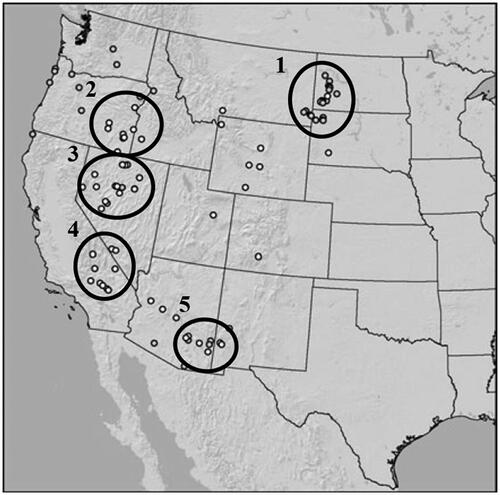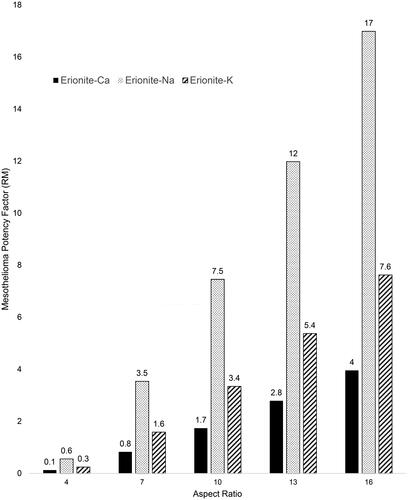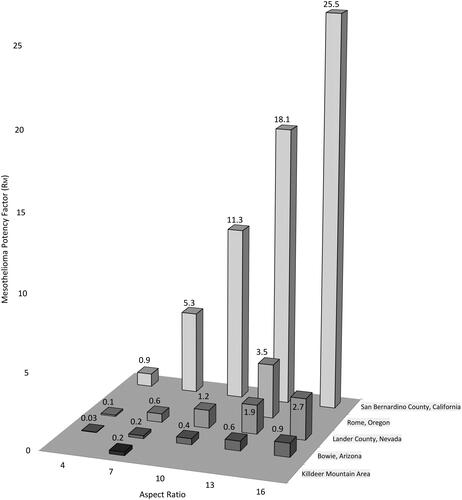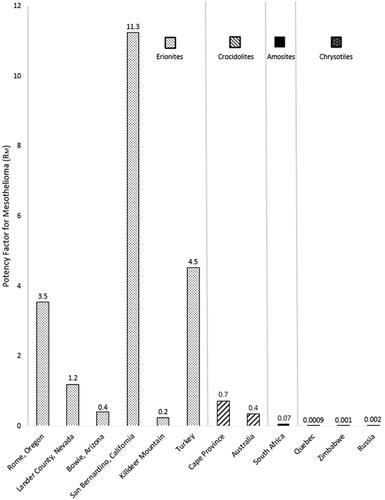Figures & data
Figure 1. Modified from Van Gosen et al. (Citation2013), this figure depicts the approximate locations of natural erionite from Sheppard (Citation1996) and Van Gosen et al. (Citation2013). (1) The Killdeer Mountain area, North and South Dakota; (2) Rome, Oregon; (3) Lander County, Nevada; (4) San Bernardino County, California; (5) Bowie, Arizona.

Table 1. The model predicted mesothelioma potency factors for various aspect ratios of the general erionite compositions.
Table 2. Chemical compositions and model predicted mesothelioma potency values of erionite fibers at different locations across the western United States.
Table 3. Chemical composition and calculated mesothelioma potency factors using Korchevskiy et al.’s model for erionite and asbestos fibers.
Figure 2. The model predicted mesothelioma potencies (RM) of the various erionite types (Ca, Na, and K) discussed in Dogan and Dogan (Citation2008) at different aspect ratios.

Figure 3. Mesothelioma potencies (RM) of the erionite compounds in 5 different regions based on the model described in Korchevskiy et al. (Citation2019) with chemical composition and aspect ratios as inputs.

Figure 4. Mesothelioma potency factors for different types of fibers from various locations. Chrysotile (Quebec, Zimbabwe, and Russia), amosite (South Africa), crocidolite (South Africa and Cape Province, Australia), and Turkish erionite are from Korchevskiy et al. (Citation2019). The rest were calculated by the authors of this paper. When the median aspect ratios of erionites were unknown (Nevada, Arizona, and California), they were assumed to be 10.

Data availability statement
All data came from published and publicly available literature. All calculations are presented within the article or its Supplementary materials.
